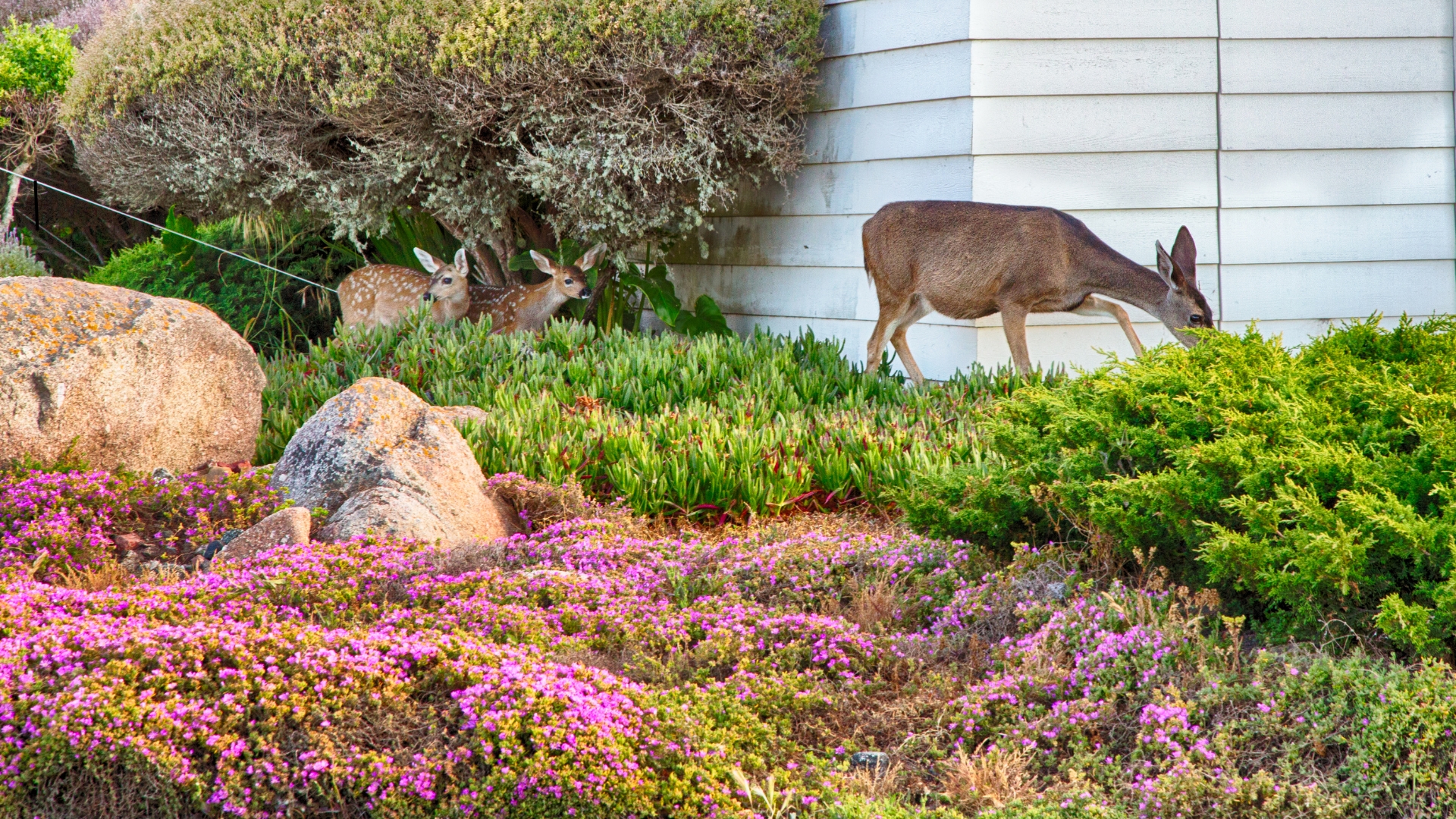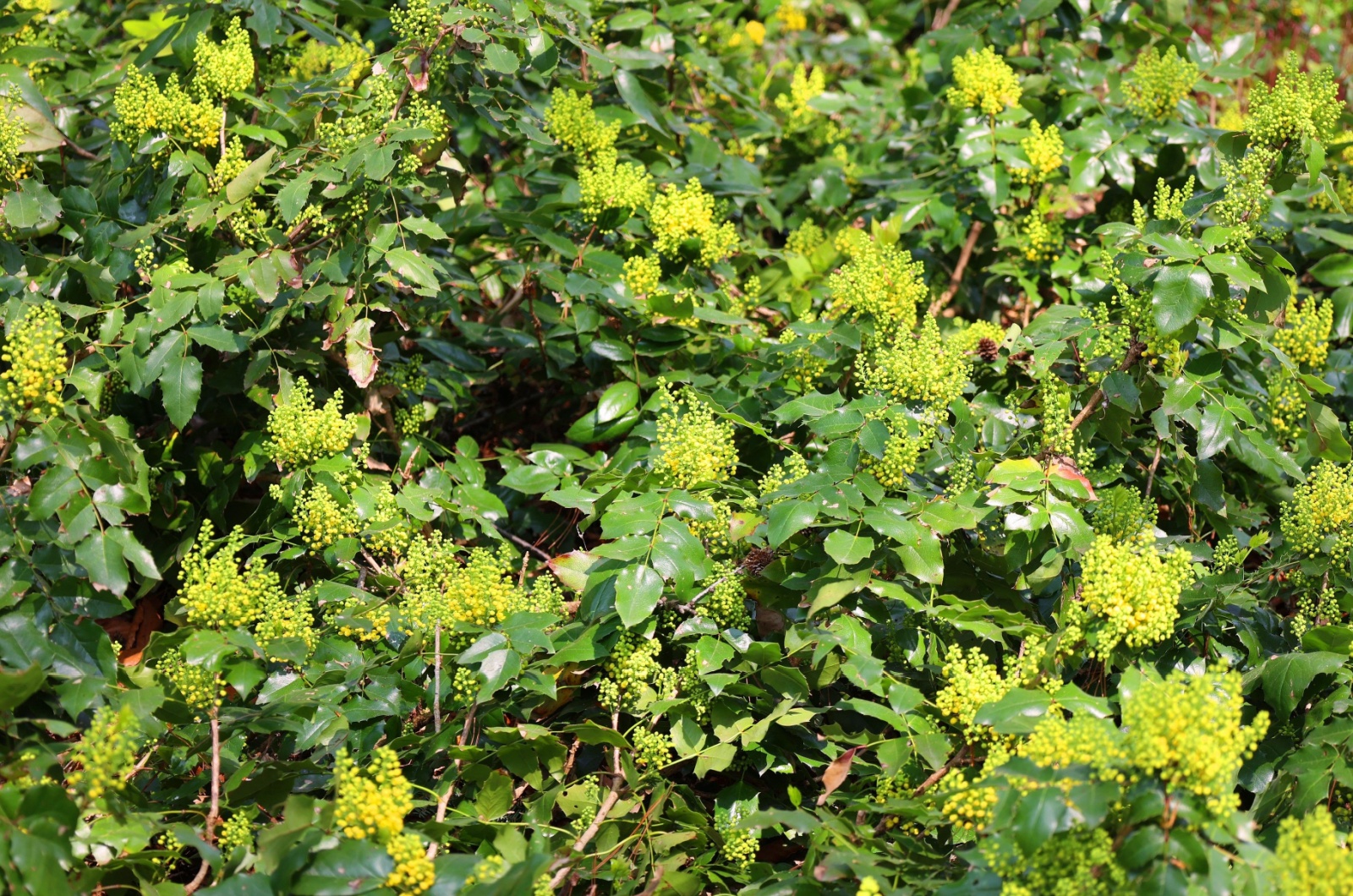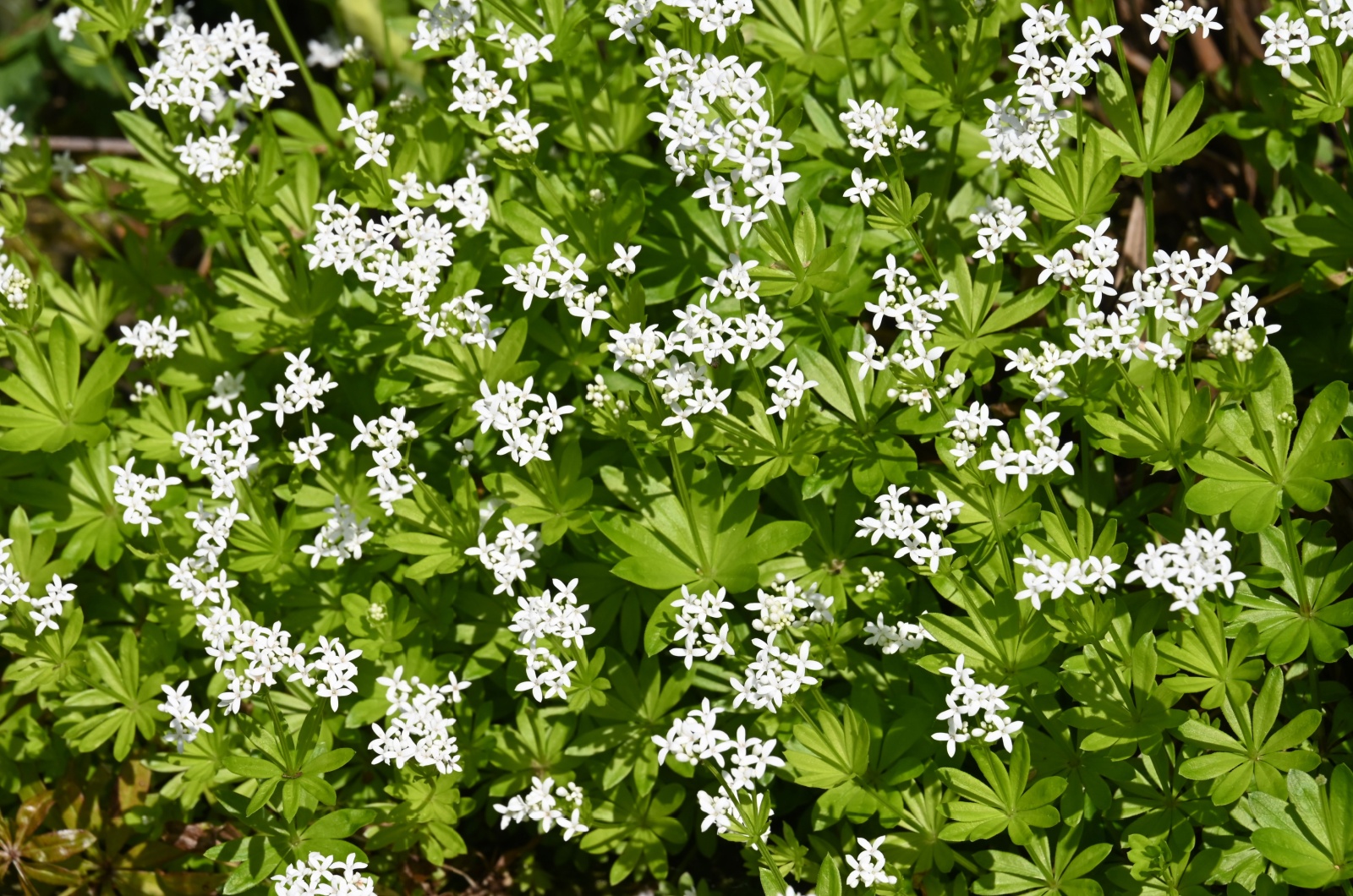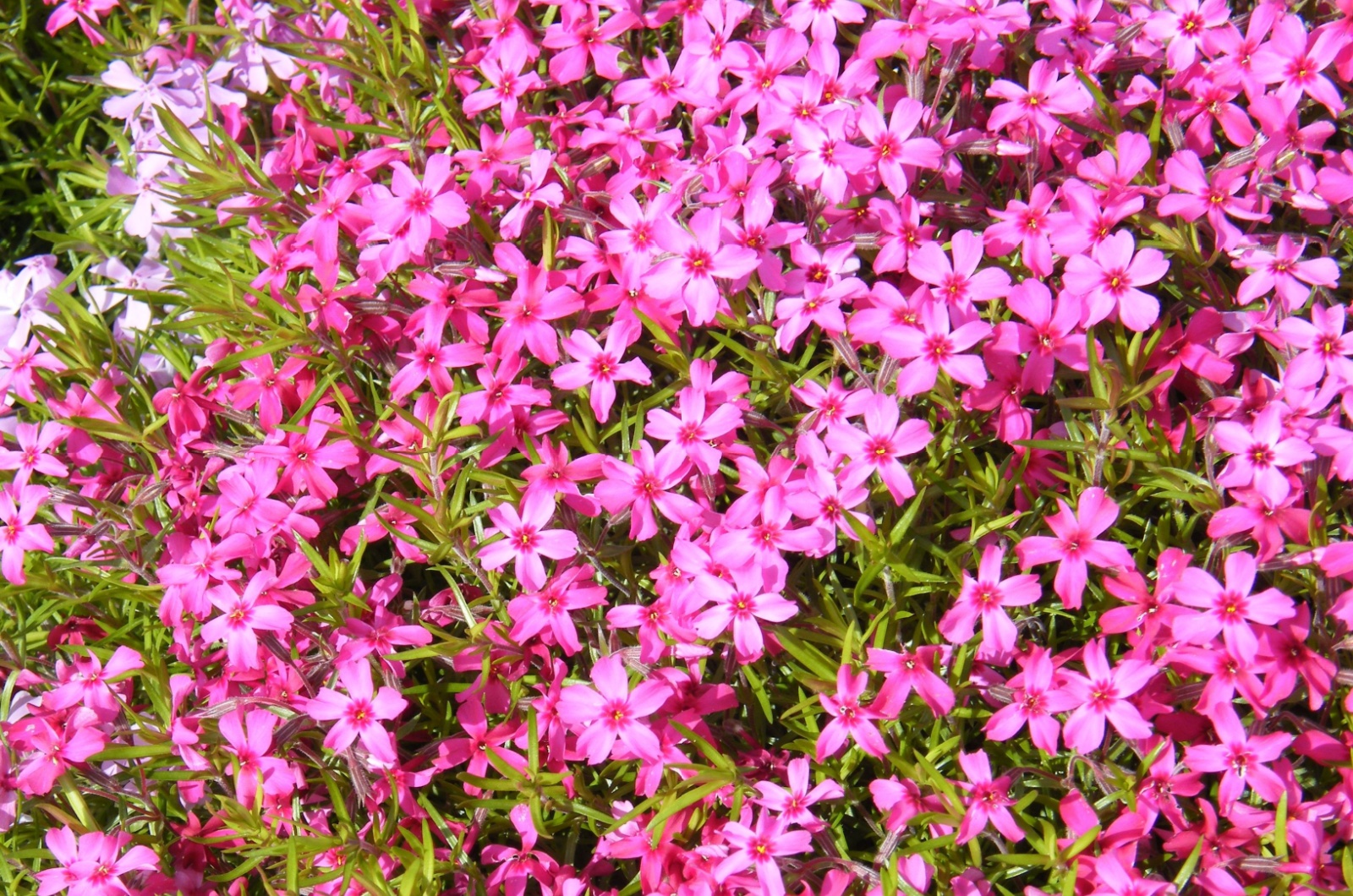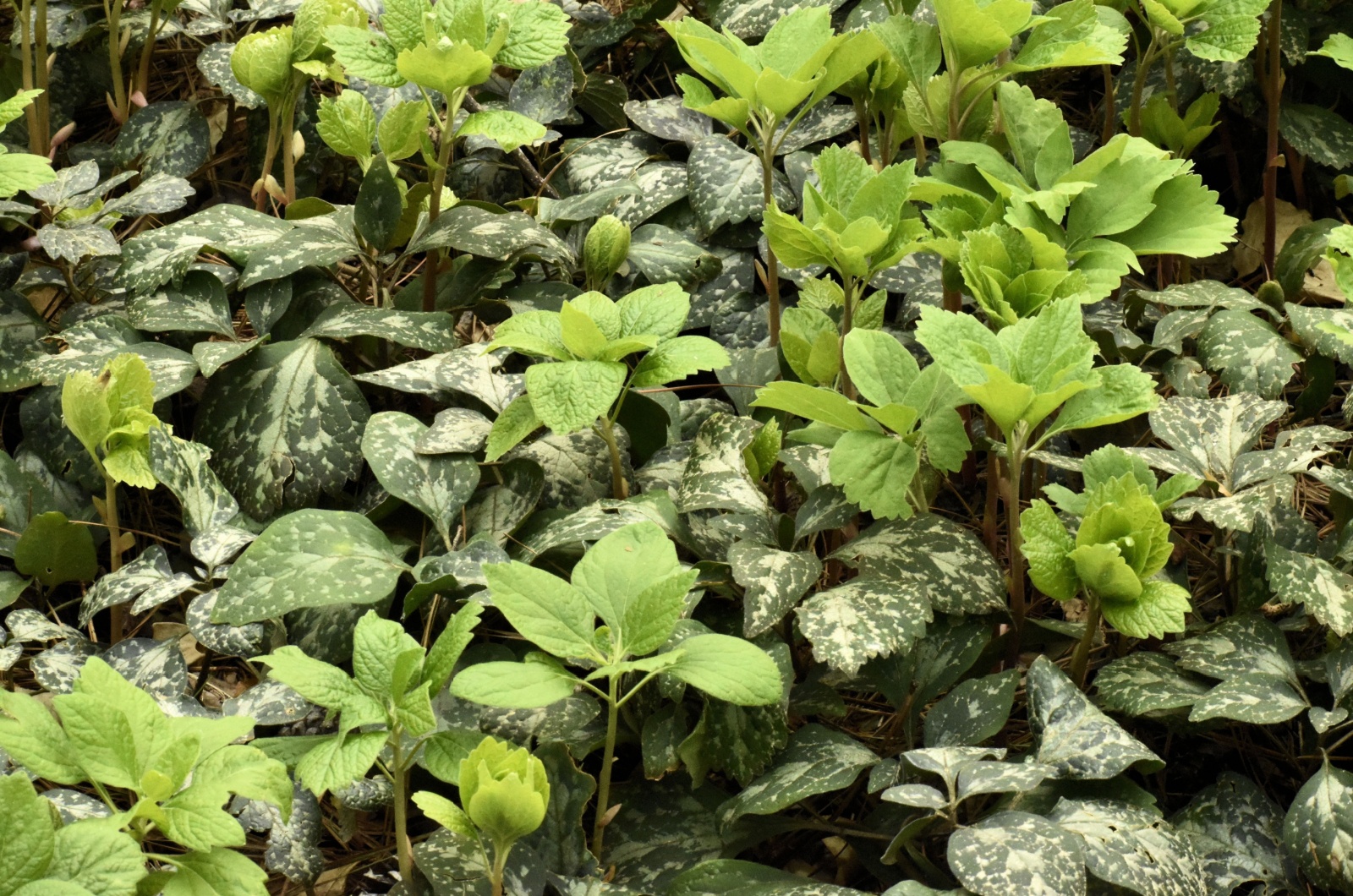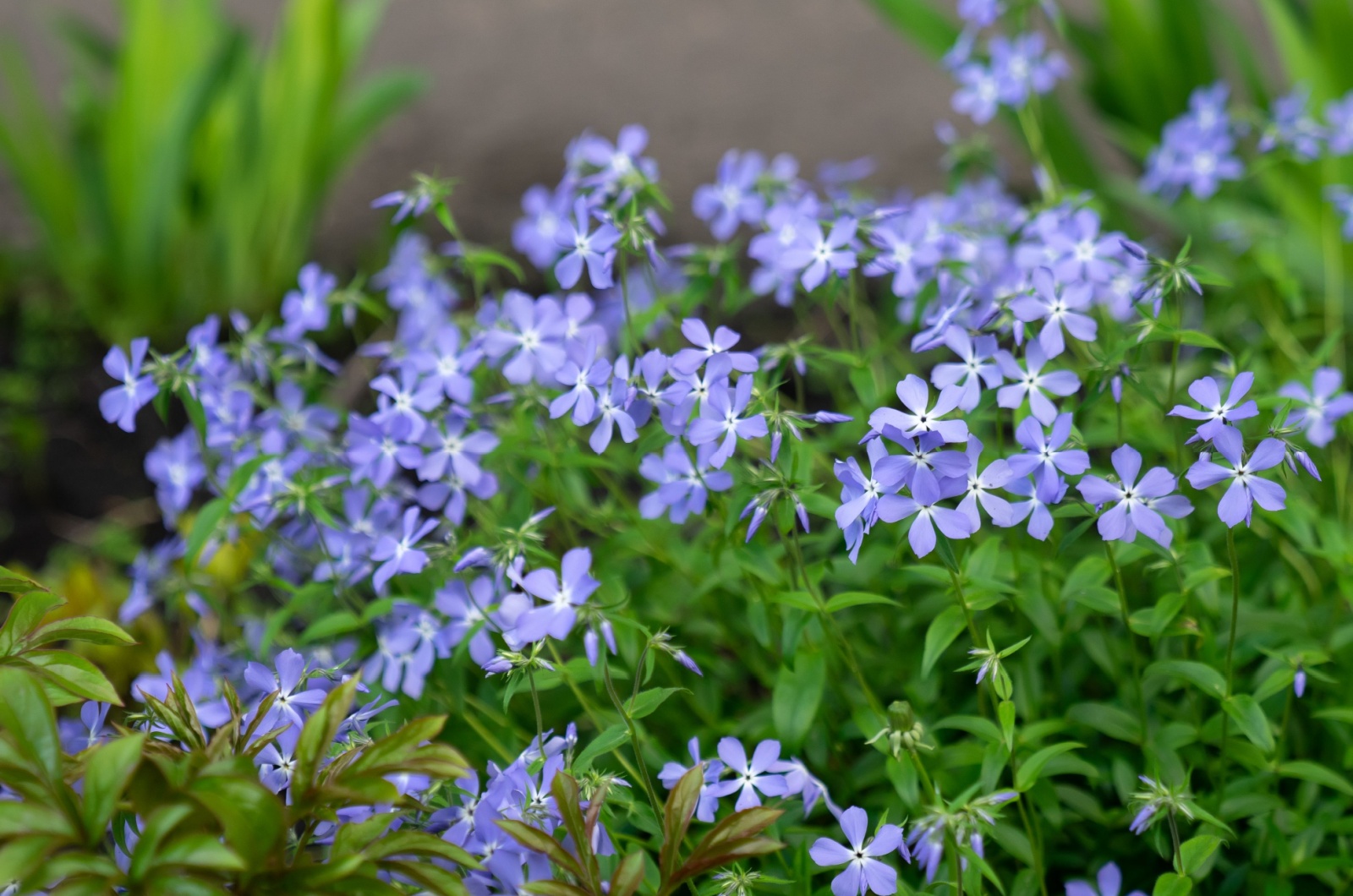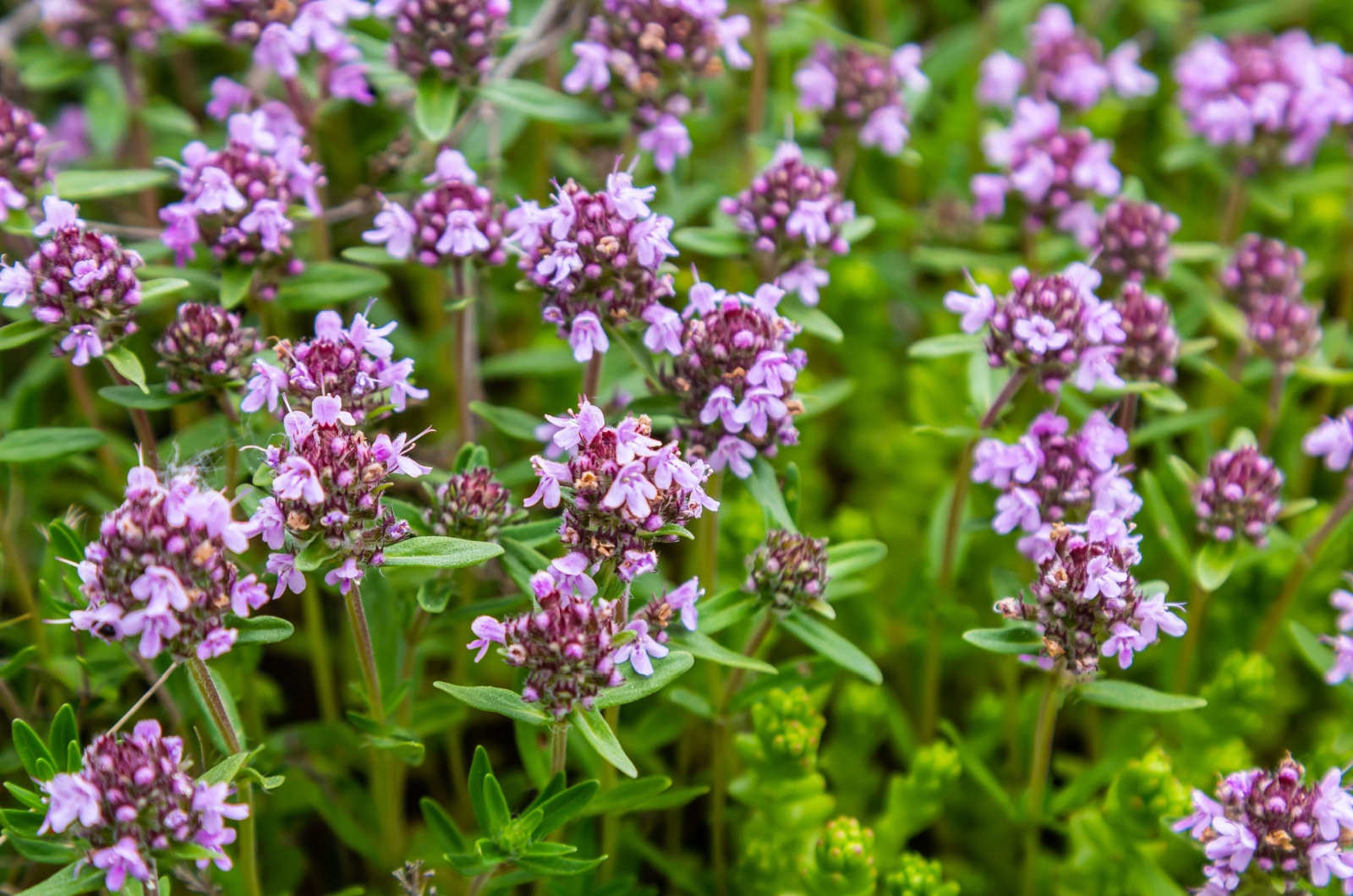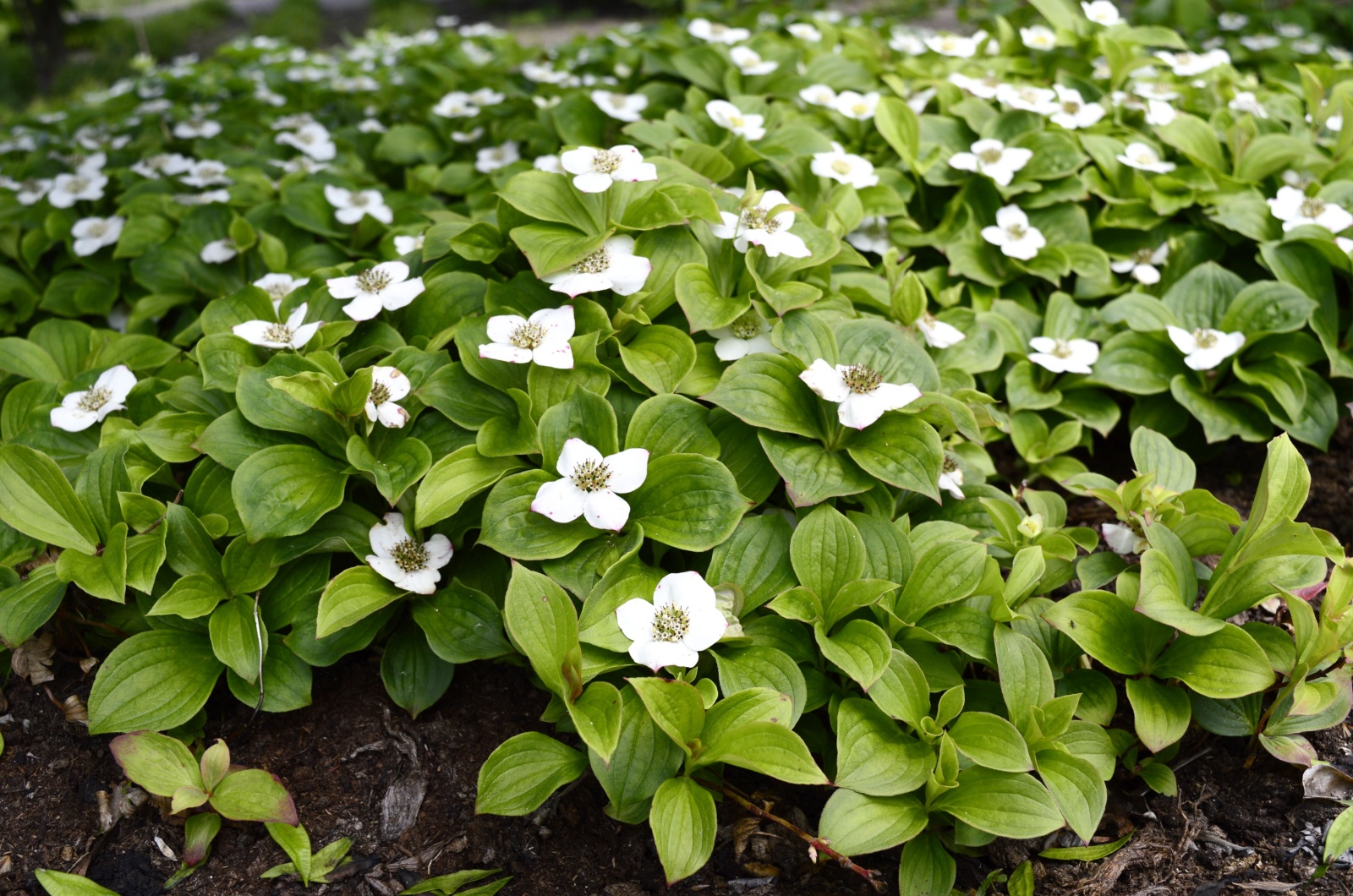I get it, deer are enchanting, and catching sight of them is like stumbling upon a hidden treasure. But the charm disappears when you realize they’ve turned your favorite plants into their personal salad bar.
So, what to do? Repelling them seems like a great idea but we should be very careful not to use any techniques that could harm them.
For me, and I’m sure for many of my fellow gardeners, the number one method is growing plants that keep deer at bay. Look, deer won’t magically disappear after you add some resistant plants. One flower bed with deer-repelling plants won’t be enough, what about the rest of the yard?
Our goal must be to create a wide-reaching defense all around the yard. And the best way to reach that goal is to plant ground covers.
There are plenty to choose from, but I’ll show you the best ones that add a dash of charm to your yard while standing guard against hungry deer!!
1. Creeping Mahonia Is A Sworn Enemy Of Deer
The first ground cover on our list is the lovely creeping mahonia. If you haven’t heard of it, perhaps creeping barberry or creeping hollygrape ring a bell?
This lovely perennial doesn’t exceed 1 foot and displays yellow blossoms in spring that give rise to deep blue berries.
But flowers and berries aren’t the ones responsible for repelling deer. Creeping mahonia produces leaves with sharp spines so deer stay away from them.
Creeping mahonia is super easy to maintain and shows excellent resistance to drought. It’s not fussy over the soil or light and pollinators adore it. What else could we ask from a single plant?!
2. Fragrant Sweet Woodruff Keeps Deer At Bay
The enchanting vanilla-like scent of sweet woodruff makes the plant very popular among gardeners worldwide. It has been used as a pest-repellent for centuries and its dried leaves and blossoms can be used as potpourri.
Fortunately, deer hate the fragrance of sweet woodruff!
This plant will develop into a dense cover, so many yard owners use it as a lawn alternative. Additionally, this is a plant that prevents weeds and it’s perfect for beginners.
Be careful if you live in warmer climates because sweet woodruff can start spreading aggressively.
3. Use The Powers Of The Lovely Creeping Phlox
And here comes one of the most popular flowering ground covers, the one and only creeping phlox. We all love it, but luckily, deer don’t share our opinion.
You may notice deer munching on your creeping phlox in winter but that’s just because there isn’t anything else they could eat. Desperate times call for desperate measures.
So, if you want deer and many other animals to stay away from your property, creeping phlox is just what you need. If your garden lacks pollinators, that’s another job this lovely plant will take care of.
Creeping phlox is most suitable for USDA zones 5 through 8 and spreads pretty quickly.
For best results, select a spot where your creeping phlox can receive about 6 hours of direct sun daily.
4. Allegheny Spurge and Deer Don’t Get Along Well
If you were looking for a native spurge that serves as a groundcover, your quest ends here. Allegheny spurge is a captivating variety with lots of benefits.
It grows densely and typically doesn’t get over 1 foot tall.
Deer aren’t really fond of Allegheny spurge, so planting it as a barrier is an excellent idea.
If these animals bother any of your trees and shrubs, you can arrange this spurge variety around the base to protect the plants.
Remember that this is a shade-loving plant and stay away from sunny sites in your yard. Additionally, make sure the soil drains well because this spurge is susceptible to leaf blight and this disease thrives in moist conditions.
Always water your Allegheny spurge around the base, making sure the leaves stay dry. By meeting these requirements, you’ll have a happy and healthy spurge.
And once spring arrives, you can expect stunning and fragrant white blossoms.
5. Periwinkle Is Another Magical Plant
Are you out of ideas for a ground-cover plant? Or do you just want to deter those annoying deer? Periwinkle comes to the rescue either way!
Believe it or not, this plant also suppresses weeds, improves the soil, and controls erosion. How remarkable! However, there’s one downside of periwinkle you should be very careful about.
It’s considered invasive in the wild, and if you meet all its requirements, it’ll spread like crazy. This is great news for those with large yards and a lot of ground to cover. For owners of smaller yards, the story is a bit different.
If you decide to plant it, simply choose a sunny spot and leave your periwinkle alone.
6. They’ll Also Stay Away From Creeping Thyme
If you’re walking through a garden with creeping thyme, its scent is the only thing you’ll be aware of. Luckily, deer find this scent unattractive so they steer clear.
This low-growing plant also performs well in containers so you can arrange it in many ways. Pink and purple blossoms appear in summer and will add an incomparable touch of beauty to your outdoor space.
Many gardeners are worried about creeping thyme invasiveness but this plant isn’t invasive, although it does spread pretty quickly.
You don’t need to put a lot of effort into maintaining your creeping thyme because it only requires a sunny spot and free-draining soil.
7. Creeping Dogwood For The Win!
And last but not least, my personal favorite is creeping dogwood. It produces clusters of captivating red berries in summer and this feature earned the plant the nickname bunchberry.
Rabbits and deer aren’t really enchanted by creeping dogwood which makes us love it even more.
Creeping dogwood reaches about 1 foot and won’t spread more than 6 inches. Bear this in mind when purchasing a plant because you’ll most likely need a lot of them even for a smaller area.
It tolerates different light levels and grows best in USDA zones 2 through 6.
White blooms occur in spring followed by red berries that appear in summer and last through fall. Before winter arrives, the foliage will turn red and transform your garden into a true masterpiece.
And here we part ways! Plant any of these lush ground covers and you’ll have a garden that deer won’t dare touch for years!

